British Soldier Lichen
 It’s been a fun week for me. I finally saved up enough mad money to have some fun buying terrarium plants for my tiny green gardens. This order was for some very pretty lichens from the Appalachian Mountains. I always question ordering assortments as I almost always seem to not get what I would consider a fair share of the good stuff. I knew as soon as I pulled the baggie from the shipping envelope, that I had quite a bit of the good stuff. Look at all of the beautiful red – that’s the British Soldier Lichen.
It’s been a fun week for me. I finally saved up enough mad money to have some fun buying terrarium plants for my tiny green gardens. This order was for some very pretty lichens from the Appalachian Mountains. I always question ordering assortments as I almost always seem to not get what I would consider a fair share of the good stuff. I knew as soon as I pulled the baggie from the shipping envelope, that I had quite a bit of the good stuff. Look at all of the beautiful red – that’s the British Soldier Lichen.
Six days ago, I ordered the Appalachian Emporium’s Large Terrarium Mix Moss & Lichen Variety Assortment. The assortment is a pint of woodland goodness. I received a sandwich-sized zip lock bag full of lichens and moss. It contained one fairly large piece of sheet moss (at least 6 inches by 5 inches at the widest points), a second piece about half that size and 8 clumps of moss and lichens. It all looked great but it did seem a little on the dry side. I misted both the top and bottom of everything and it seems to be doing great.
In this post, I thought I would show off my lovely new British Soldier Lichen and share with anyone also buying the assortment what I have learned about these charming little plants.
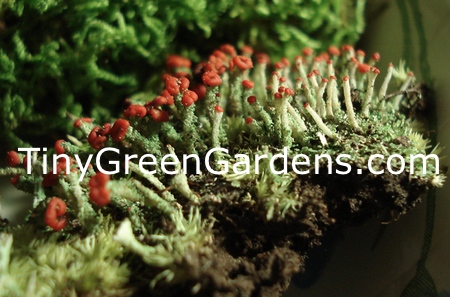
British Soldier Lichen
Let’s start with the science. This lichen carries the scientific name Cladonia cristatella – Cladonia means mountains and cristatella translates to crested. Edward Tuckerman (1817 – 1886) was the American botanist credited with first identifying the species in 1858. Tuckerman held two BA degrees, a law degree from Harvard and a Divinity degree. He was a lecturer in History, Oriental History and Botany. It was his extensive studies of lichens for which he is most remembered.
Much like Tuckerman’s academic interests, lichens have a bit of a split personality. They are two organisms that grow together in a somewhat symbiotic relationship. That concept was developed during Tuckerman’s life, but he never agreed with it.
That relationship is a partnership between algae or cyanobacteria (or both) and fungus. Technically, it’s not a plant – it’s a composite organism. The algae in this case is Trebouxia erici but with lichen, the organism is named for the fungus. It grows more like a plant than what we think of as organisms which is why most folks refer to lichens as plant-forms. Lichens don’t have roots but they do produce their own food through photosynthesis like plants do. British Solider Lichens are one of the few lichens eaten by insects, birds or mammals. Insects primarily use them for shelter but one blogger reports that he’s seen whitetail deer, turkeys and voles eat them.
It’s believed that these lichen were called British Soldiers because the red caps (apothecium) are reminiscent of the hats worn by the “Red Coats.” A quick bit of research leads me to question this slightly, during Tuckerman’s era, it was more likely to see a French soldier in a red cap and some regiments of the Confederate forces were red headgear. However, a number of ceremonial uniforms of the time did have bright red feathers and plumes on their headwear.
Growing British Solider Lichen
 It does seem that Cladonia cristatella prefers to grow on rotting wood. They are often found at the base of old tree stumps. They also grow on mossy logs, healthy tree bases and on the soil. I saw several pictures online where they were growing on rocks and cement as well.
It does seem that Cladonia cristatella prefers to grow on rotting wood. They are often found at the base of old tree stumps. They also grow on mossy logs, healthy tree bases and on the soil. I saw several pictures online where they were growing on rocks and cement as well.
I plan on adding some leaf matter and maybe a bit of rotting wood in my terrarium near my lichen. I’ve only read of one supplier recommending using a soil rich in organic matter or even an ABG soil mix. But, it seems like it would be best to try to mimic their favorite growing places.
This map from the USDA website shows where British Soldier Lichens are found in nature. Mine were shipped, and presumably harvested from the northeast corner of Tennessee.
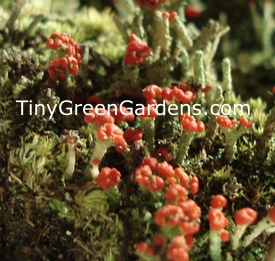
British Soldier Lichens are considered frutose lichens. Frutose lichens are those with an upright growing habit or hanging one. They are also among the most colorful of lichens. The bright red caps on the end of the thallus don’t form until the organism is at least 4 years old.
They are extremely slow growing. They only grow 1-2 millimeters a year. If you’re not a metric person, the American dime is 1 mm thick.
Those stunning red caps contain the spores. Until the spores are joined by Trebouxia erici, the algae, they will not become British Soldiers.
Buy British Soldier Lichen
If you wish to buy British Soldier Lichens for your terrarium, I do recommend the
No products found.
Appalachian Emporium’s Large Terrarium Mix Moss & Lichen Variety Assortment. It is an assortment and what you receive might vary from what I got.
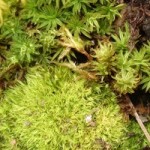

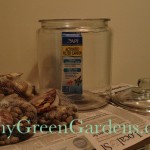



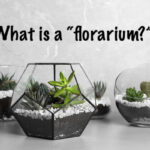

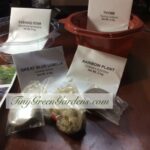

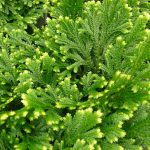

Hi! I’m thinking of starting a terrarium in a glass jar. I thought it would be cute to have this moss, but I don’t know if it is right for it. My jar is 4 inches tall, and has a diameter of 3 and 1/4 of an inch. Measuring around the jar, its 11 and 1/4 of an inch.
Hi Megan,
Being honest with you, I’m not sure. It did well for me while I was misting daily and providing some artificial lighting. Once I got in trouble with a gnat infestation and didn’t water and mist as often, the British Soldier Lichen quickly declined. I’m hoping I haven’t lost it. 🙁 I’ve ordered some Mosquito bits and gnat traps and will hopefully get my terrarium back under my control.
That said, I absolutely loved having this lichen in my tiny gardens. If your dirt doesn’t come with gnats and you can daily mist, provide some light and light waterings, I think it would work fine. The clumps that I received were a variety of sizes and I think any of them would have fit in your jar.
Thank you so much for replying! I will keep the gnat problem in mind, and hopefully it goes well!
I have some growing on my back fence. I brought some. Inside and added it to a tropical terrarium and it did well for a short time. I really believe that it needs to dry out a bit between watering as the ones on the fence do very well through the seasons but only lasted about a month in the tropical humidity.
I had mine going for a little while. Power outtage in winter pretty much did my entire terrarium in. It’s definitely a trial and error plant for inside growing or terrariums.
Should the lichens be in a closed terrarium?
Hi Liz,
Sorry for the late reply, didn’t realize that I didn’t have the email notifications turned on. 🙁
I’ve been finding in my experiments with moss that semi-open containers, which allow for more air circulation, seem to keep the moss happier. I’ve only planted lichens in semi-open containers, so I can’t really tell you if they would do well in one that is fully closed. I suspect since lichens rely upon breezes and wind to propagate that having a bit of air circulation keeps them happier too.
If you do a bit of your own experimenting, I do hope you come back and share how it went.
I would like to try this British Soldier…does it come attached to the rotting wood, or whatever it grows on?
Will I need to supply something for it to grow on? Or did you just stick it in the terrarium medium and provide the rotting wood/leaf matter near it for it to propagate itself onto. I can’t quite understand how the lichen we receive is supposed to survive. I’m wanting to put it in with ferns and moss as well.
Hi Kristin,
Thank you for stopping by. Just want to make it clear that I’m not selling the British Soldier lichen, I purchased it from a 3rd party via Amazon.
When I purchased mine, it was healthy and doing well. It came with a bit of soil attached at the bottom. I had it going quite nicely in my open terrarium. I “planted” it in loose soil by placing it on top of the dirt. Were I to buy it again, I would plant it a bit more deeply so that instead of sitting on top of the soil it was slightly embedded in the soil.
Unfortunately, I was quite ill last year and lost almost everything in my tiny green gardens, including the beautiful lichens. Am hoping to rebuild this year and continue sharing my gardening adventures.
Just keep in mind that ferns, moss and lichen love moisture. We purchased some ferns around Christmas and almost lost two of them when they weren’t watered every day. I’ve been giving them a few squirts from a little squirt bottle every day and they are slowly coming back. I think because you want to have moss and lichen too, I would suggest an open terrarium. I’m finding they do much better with a little air circulation – no need for a fan or open window, just the regular air movement from being open to a room. And, keep them out of the direct sunlight.
Good luck and have fun with your tiny green garden.
Thank you so much. I wish you health and happiness.
How long does the red tops on British soldier moss stay red
Hi Joan,
It’s my understanding that the red part of the plant, the apothecia, is the reproductive part of lichen. I have not found anything that states the red caps are somehow seasonal or only periodically appear. Many experts write as if the caps are how most folks identify these lichens; implying that their red caps are always present.